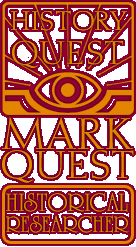|
Albert
on one or two occasions, had related to his son Edward how, as a
child, he spent many happy hours listening to various tales his
grandfather, William, had told including one about how greatgrandmama
Lizzie, as a young girl at boarding school, had found strange writings
and papers that had once belonged to someone important, but that
it was a family matter and should never be repeated, Albert always
being sworn to secrecy.
Early in the 1920's Edward
had gone to Cambridge University to study classical and ancient
languages. He had always shown an incredible grasp of Latin and
Greek even at prep school, and had often expressed a strong interest
in ancient languages. At Cambridge he met an equally enthusiastic
student of ancient languages and with this interest in common the
two young men developed a strong and lasting friendship. Edward
often invited his friend to stay for a weekend at his parent's home
"Pacatus" and over the years their friendship never wavered.
In 1932 Edward’s friend, now a junior professor of ancient languages
at Cambridge, was invited by Edward to meet his new fiancée
at his parent’s house. During the evening the conversation strayed
to ancient languages in general and the Celtic language (or lack
of it) in particular. The discovery at Skara Brae during the 1860s
by William Watt was also discussed and the possibility that there
may have been found examples of a written language. During the evening
Edward’s father, Albert, referred to the family story of Lizzie
Peterson and her discovery of the strange writing and the amazing
fact that he had only recently discovered, after all this time,
the same copper cylinder and its strange contents apparently hidden
in his grandfather William’s old traveling trunk, in the tiny cluttered
attic of "Pacatus".
Albert related the tale his grandfather, had told him - about how
greatgrandmama Lizzie, as a young girl at boarding school, had found
the copper cylinder with its oilskin parcel - but that it was a
family matter and should never be repeated.
He had given the contents of the cylinder a cursory looking over,
the writing was mainly in Latin, or so he thought. There was a chart
of sorts and some hardly visible rubbings that appeared to show
rows of symbols, but he had been waiting for the "two language
experts" to cast their critical eye over the find and perhaps
offer him some professional advice.
The relics were examined carefully by Edward and his friend. The
copper cylinder was approximately 14 inches long and about 4½
inches in diameter, both men were very excited by what it contained.
After some discussion Edward suggested that his friend use the University’s
facilities to examine the items more thoroughly. The evening quickly
became early morning with more discussions in a similar vein and
references to short extracts and translations of the apparent 16th.
Century handwriting in Latin. The following morning Edward’s friend
made his farewells and drove straight to Cambridge some 30 miles
away.
All the items were photographed at the University within a few days
and arrangements were made to return them as soon as possible to
Albert Taylor at his specific request. The day the items were to
be returned - Edward’s friend was involved in a motor accident and
was unconscious for three days, he remained in hospital for a further
two weeks. Edward visited him regularly and was occasionally accompanied
by his new fiancée and sometimes by his parents.
The copper cylinder and its contents and also the photographic negative plates, which Albert had agreed to purchase, were never seen again, authenticity
could never be confirmed the one set of photographic prints were the only consolation.
The Taylor's reluctantly accepted photographic copies of the relics
as the only possible substitute for their strange family heirloom.
In addition to this disastrous finale to the events, there was no
apparent photographic record of the rubbings. Edward's friend had
only sketchy memories of the whole series of events and was unable
to remember clearly ever seeing the rubbings at the University,
consequently there were only photos of the Latin text and the chart.
Edwin's friend, the professor, always blaming himself for the loss
of the artifacts, became morose and experienced long periods of
depression. For months after his accident he searched the area and
questioned the people who had pulled him from his wrecked car. His
feelings of guilt created a barrier between him and the Taylor family,
this rift only increased with time. Edwin tried many times, without
success, to convince his old friend that all his feelings of guilt
and anxiety were unfounded and certainly not shared by anyone in
the Taylor family.
|



